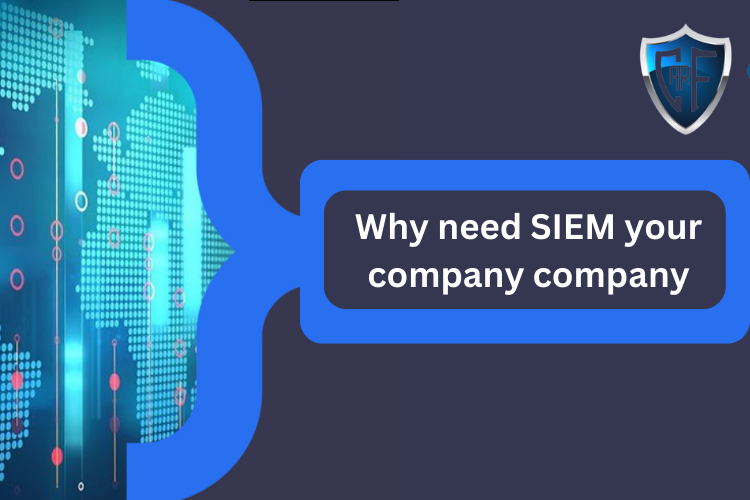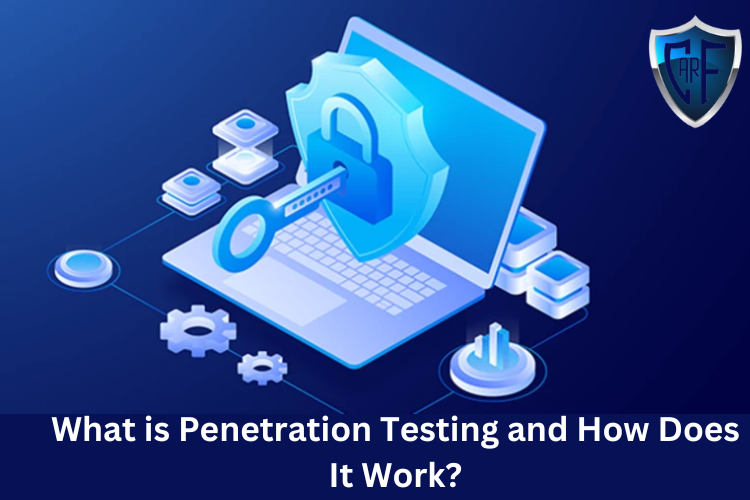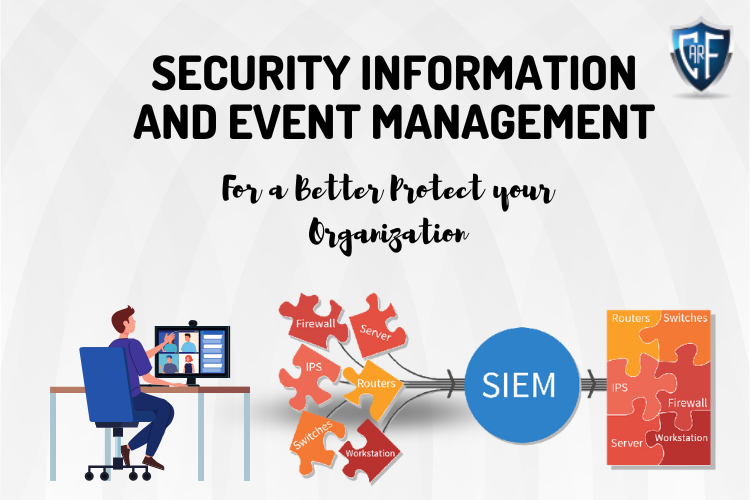Why need SIEM your company company ?
Security information and event management (SIEM) is an approach to security management that combines SIM (security information management) and SEM (security event management) functions into one security management system. The acronym SIEM is pronounced "sim" with a silent e.The underlying principles of every SIEM system is to aggregate relevant data from multiple sources, identify deviations from the norm and take appropriate action. For example, when a potential issue is detected, a SIEM system might log additional information, generate an alert and instruct other security controls to stop an activity's progress.At the most basic level, a SIEM system can be rules-based or employ a statistical correlation engine to establish relationships between event log entries. Advanced SIEM systems have evolved to include user and entity behavior analytics (UEBA) and security orchestration, automation and response (SOAR).Payment Card Industry Data Security Standard (PCI DSS) compliance originally drove SIEM adoption in large enterprises, but concerns over advanced persistent threats (APTs) have led smaller organizations to look at the benefits SIEM managed security service providers (MSSPs) can offer. Being able to look at all security-related data from a single point of view makes it easier for organizations of all sizes to spot patterns that are out of the ordinary.SIEM systems work by deploying multiple collection agents in a hierarchical manner to gather security-related events from end-user devices, servers and network equipment, as well as specialized security equipment, such as firewalls, antivirus or intrusion prevention systems (IPSes). The collectors forward events to a centralized management console, where security analysts sift through the noise, connecting the dots and prioritizing security incidents.In some systems, preprocessing may happen at edge collectors, with only certain events being passed through to a centralized management node. In this way, the volume of information being communicated and stored can be reduced. Although advancements in machine learning are helping systems to flag anomalies more accurately, analysts must still provide feedback, continuously educating the system about the environment.Here are some of the most important features to review when evaluating SIEM products:Integration with other controls. Can the system give commands to other enterprise security controls to prevent or stop attacks in progress?Artificial intelligence (AI). Can the system improve its own accuracy through machine learning and deep learning?Threat intelligence feeds. Can the system support threat intelligence feeds of the organization's choosing, or is it mandated to use a particular feed?Extensive compliance reporting. Does the system include built-in reports for common compliance needs and provide the organization with the ability to customize or create new compliance reports?Forensics capabilities. Can the system capture additional information about security events by recording the headers and contents of packets of interest?How does SIEM work?SIEM tools work by gathering event and log data created by host systems, applications and security devices, such as antivirus filters and firewalls, throughout a company's infrastructure and bringing that data together on a centralized platform. The SIEM tools identify and sort the data into such categories as successful and failed logins, malware activity and other likely malicious activity.The SIEM software then generates security alerts when it identifies potential security issues. Using a set of predefined rules, organizations can set these alerts as low or high priority.For instance, a user account that generates 25 failed login attempts in 25 minutes could be flagged as suspicious but still be set at a lower priority because the login attempts were probably made by the user who had probably forgotten his login information.However, a user account that generates 130 failed login attempts in five minutes would be flagged as a high-priority event because it's most likely a brute-force attack in progress.Why need SIEM your company company ?SIEM is important because it makes it easier for enterprises to manage security by filtering massive amounts of security data and prioritizing the security alerts the software generates.SIEM software enables organizations to detect incidents that may otherwise go undetected. The software analyzes the log entries to identify signs of malicious activity. In addition, since the system gathers events from different sources across the network, it can recreate the timeline of an attack, enabling a company to determine the nature of the attack and its impact on the business.A SIEM system can also help an organization meet compliance requirements by automatically generating reports that include all the logged security events among these sources. Without SIEM software, the company would have to gather log data and compile the reports manually.A SIEM system also enhances incident management by enabling the company's security team to uncover the route an attack takes across the network, identify the sources that were compromised and provide the automated tools to prevent the attacks in progress.Some of the benefits of SIEM include the following:shortens the time it takes to identify threats significantly, minimizing the damage from those threats;offers a holistic view of an organization's information security environment, making it easier to gather and analyze security information to keep systems safe -- all of an organization's data goes into a centralized repository where it is stored and easily accessible;can be used by companies for a variety of use cases that revolve around data or logs, including security programs, audit and compliance reporting, help desk and network troubleshooting;supports large amounts of data so organizations can continue to scale out and increase their data;provides threat detection and security alerts; andcan perform detailed forensic analysis in the event of major security breaches.ConclusionSIEMs are potentially highly valuable additions to a SOC. They correlate security data feeds, enabling them to detect serious security incidents in time to take action. They then facilitate an effective, fast response by the SOC team. At the same time, SIEM software can take significant time to set up and to adjust the alerts and responses. Embarking on a SIEM project represents a serious commitment of time and resources on the part of the security team. It should be undertaken with rigorous planning and realistic budgeting in order to ensure long term success.
Read More

.png)


.png)
